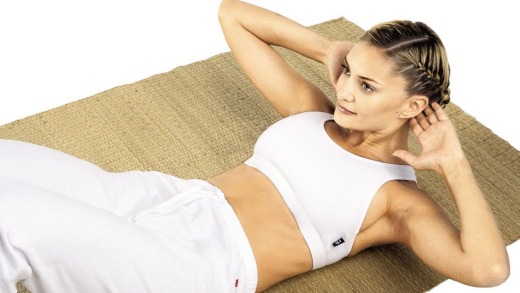From fat to Fitz
SMH writer Peter FitzSimons explains the simple changes he made to his diet and lifestyle to shed a massive 45 kilos in body weight.
Midway through some gruelling sit-ups, in a desperate attempt to reveal my abs, my gym instructor did something surprising.
"Go home," he said.
In response to my exhausted bewilderment, he explained: "You're far more likely to get abs by spending time preparing a decent meal, rather than rushing home to a quick processed meal because you spent so long doing ab crunches here."

Taking a holistic view of your health can help you cut out exercises that offer little bang for your buck.
But working smarter, not harder, is controversial when it comes to exercise.
There's a diversity of opinion on what to scrap and what to keep for time-poor busy professionals.
I asked various members of Australia's fitness industry for their suggestions.
Ditch isolation, keep compound exercises
Everyone I interviewed agreed on this.
Sports scientist and former AFL strength and conditioning coach Cameron Falloon explained the difference.
"Focus on compound exercises where you're using multiple muscle groups and ideally the body's bigger muscles. Squats, lunges or weighted step-ups give you bigger bang for your buck than leg extensions or the leg curl machine."
Personal trainer Suzana Talevski agreed.

"The best compound exercises...enable you to move more weight than isolation exercises which focus on just one muscle group. We're talking squats, deadlifts, bench press."
Fellow trainer Kristof Szanto laid out what you could omit: "Scrap isolation (single joint) exercises such as the bicep curls and tricep extensions; these only focus on one muscle group."
Jogging vs interval training
Steady-state treadmill cardio was the first thing Amanda Fisher of Bangin' Bodz recommended cutting.
"It's a waste of time. Even jogging on the treadmill is time you could be better spent lifting weights or doing HIIT (high-intensity interval training)."
Szanto agreed.
"Your body adapts very fast to aerobic activity - especially jogging, and burns less calories over time. Aim for short bursts of sprints instead."
But Dr Daniel Hackett, an exercise physiologist at Sydney University, warned not to give up altogether on standard cardio.
"It comes back to the goal of individual," he said.
"If someone wants to improve aerobic fitness, HIIT is best. But to lose weight, evidence suggests it's longer, steady-state cardio that's most effective.
"If it's to do with just reducing stubborn belly fat, a combination of different types, probably including repeated HIIT is best."
Machines vs free weights
Fitness studio owner Kimberley Watson was blunt: "In the gym, give up the machines and use the free weights - better value for stabilising muscles."
Not everyone agrees, though.
Falloon describes himself as "a free weights person" but said "machines have their place".
"Most people feel safe (on machines) and can work out how to use them safely. That's why they're still popular.
"Free weights, barbells, kettlebells require some degree of skill. They also come with a higher degree of risk than machines."
Dr Daniel Hackett, an exercise physiologist at Sydney University, agreed.
"Free weights are the most efficient - they recruit as many muscles as possible so you don't have to train all those muscles individually. But be conscious of your technique – the intensity of the lift may have to be reduced."
For exercise physiologist Naomi Ferstera, a proponent of high-intensity interval training, "it comes down to the needs of the individual rather than the actual exercise itself".
"It's also important to find exercises you enjoy as you're likely to keep doing them," Ferstera said.
Ditch crunches and push-ups
Fitness and wellness expert Lizzy Williamson says: "For those with limited time, I'd omit your standard crunches and push-ups; your body easily adapts to them. Swap for more creative exercises your body is less used to doing (both at the gym and during incidental exercise).
"For example, side-lying single-arm push-ups, kneeling thigh tilts, the plank and HIIT."
Ditch the gym altogether?
"For time's sake, I'd go for exercises that don't require much set up," Ferstera said.
"Setting up a deadlift, for example, will take more time than doing Nordic curls on the lat pulldown."
"The return on investment for the hour most people spend at the gym is lousy," says Fisher.
Taking that to its extreme might mean ditching the gym altogether, which Dr Anthony Bloomfield recommends.
"Our country's biggest issue is finding the time to exercise, not the type of exercise," he said.
"Only five per cent of adults get the recommended 30 minutes of daily exercise. We need to make it easier to obtain the recommended 150 minutes a week of exercise by encouraging people to do so to and from work.
"Much time is lost getting to and from the gym, changing into and out of gym gear and the cost itself can make it prohibitive for many."
So, put your feet up... in the air. Then lower them slowly. Repeat 10 times. And breathe.
@garynunn1
















